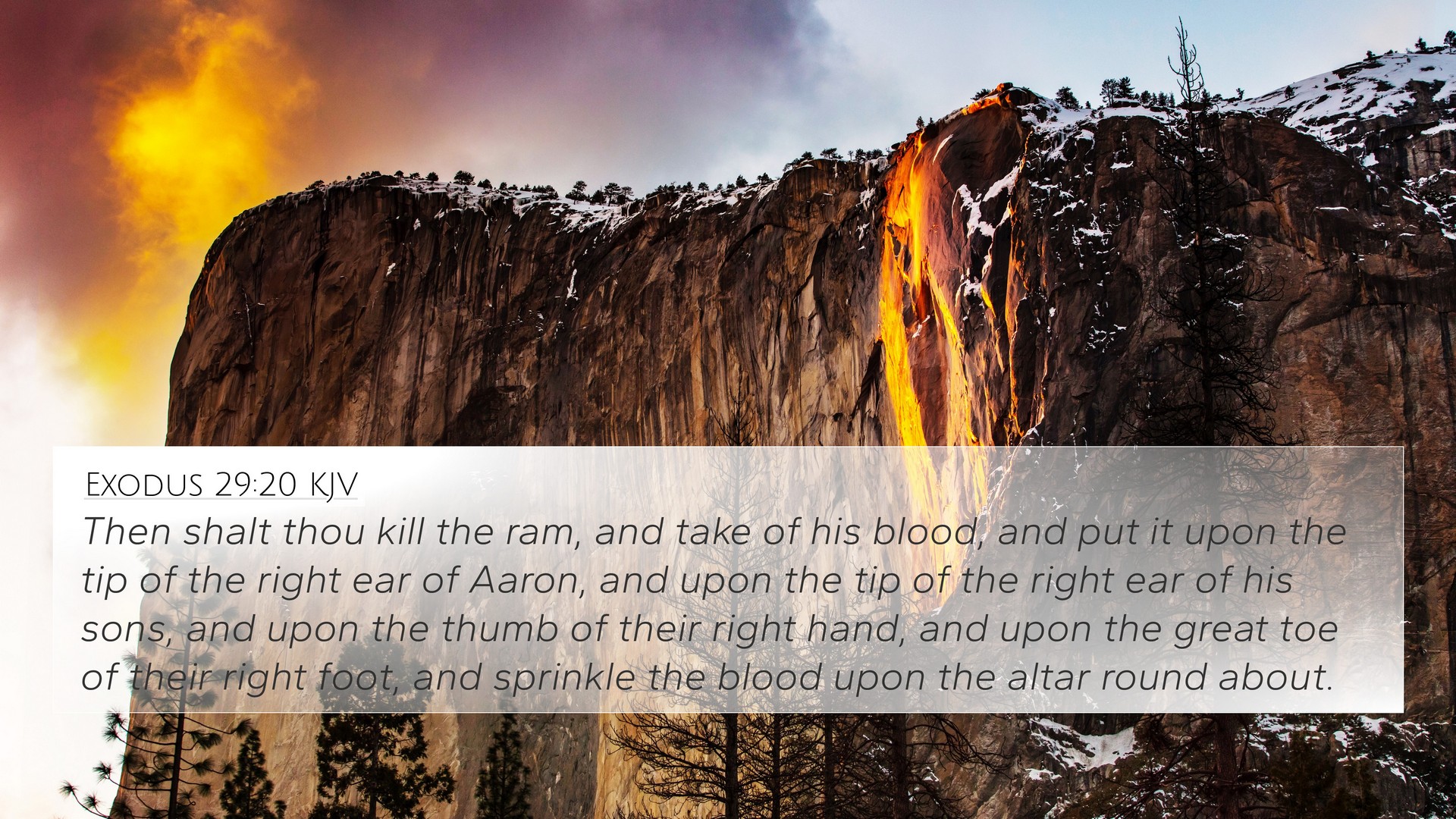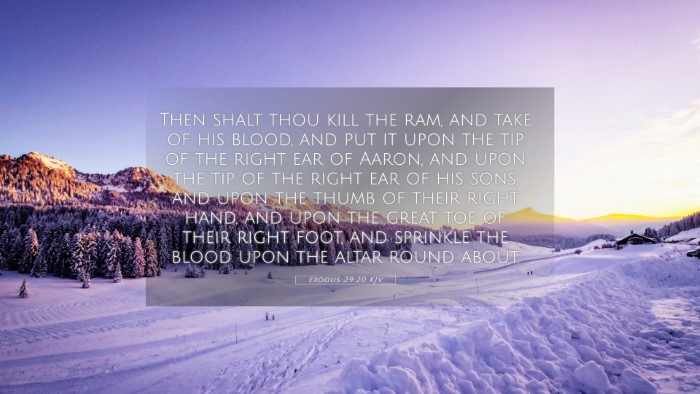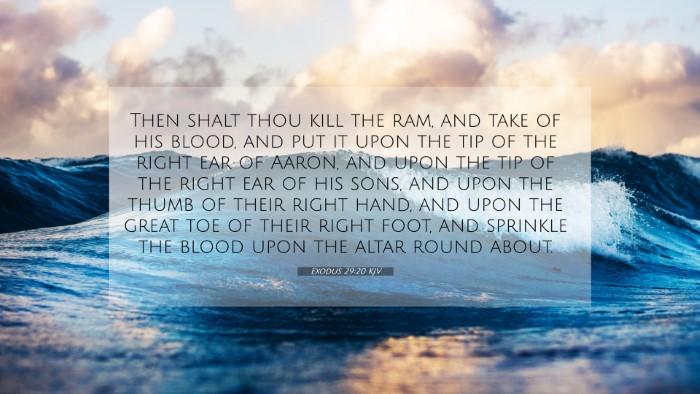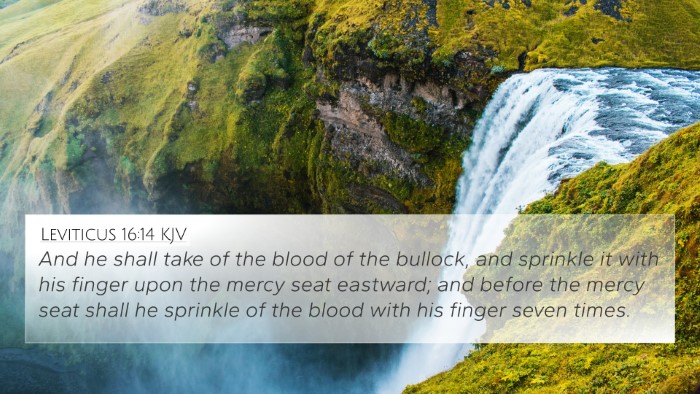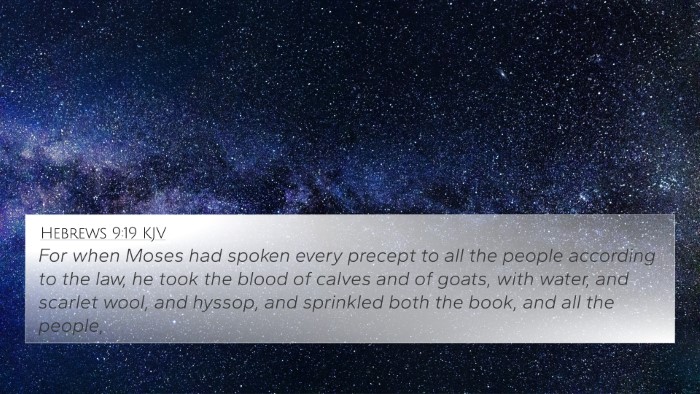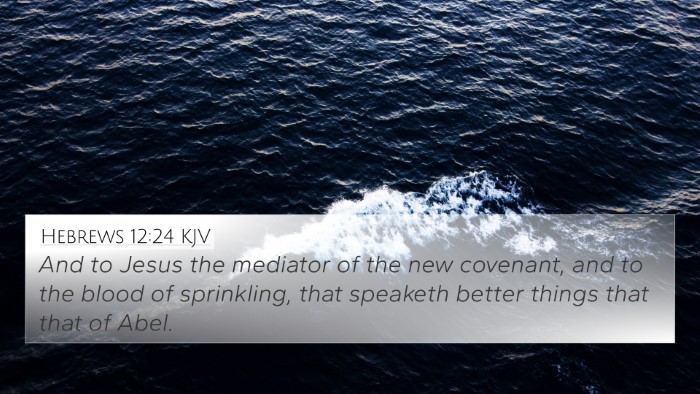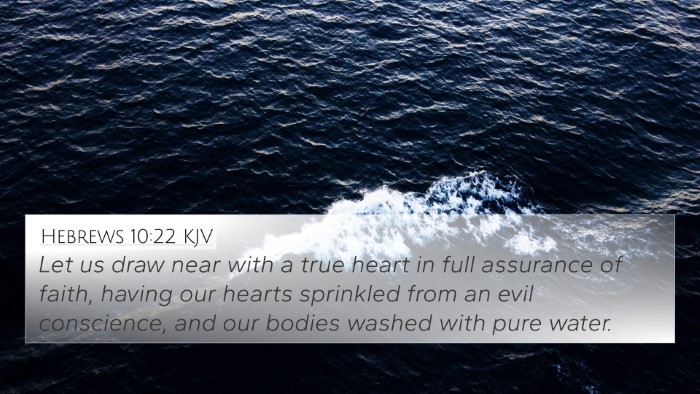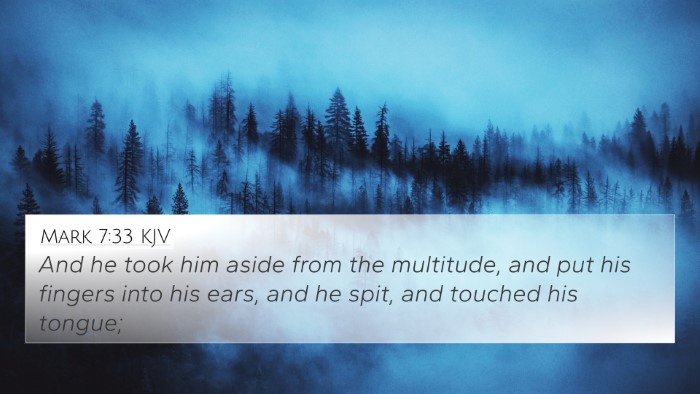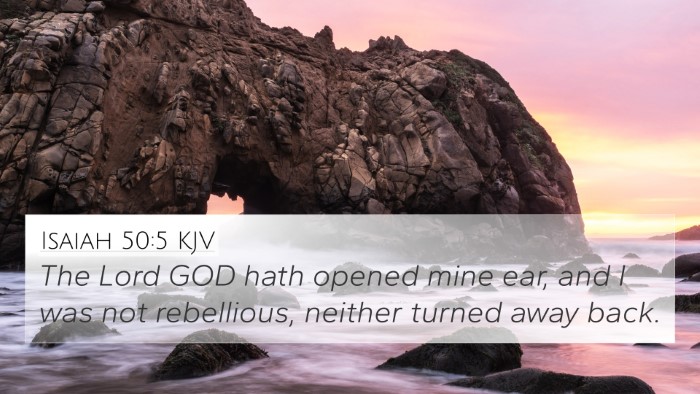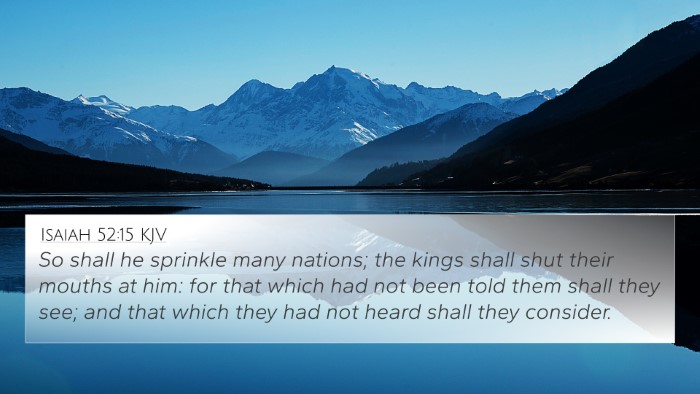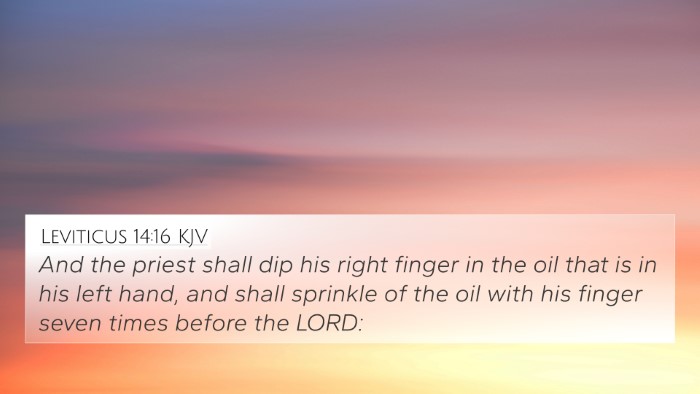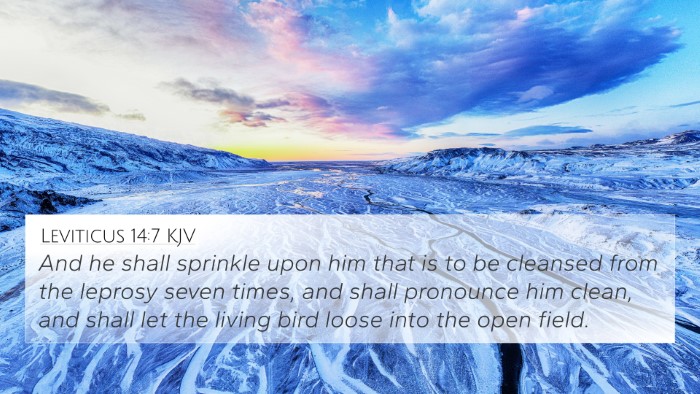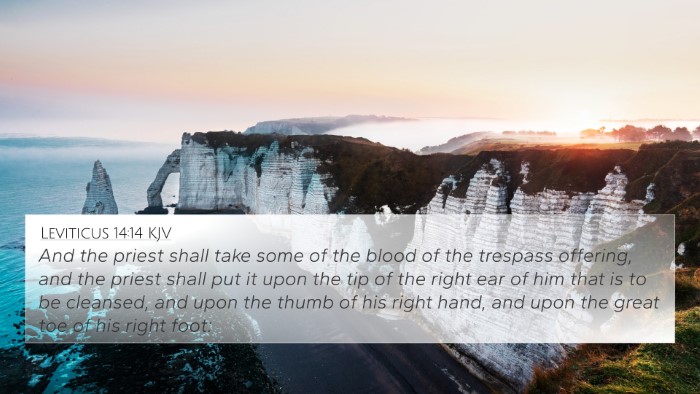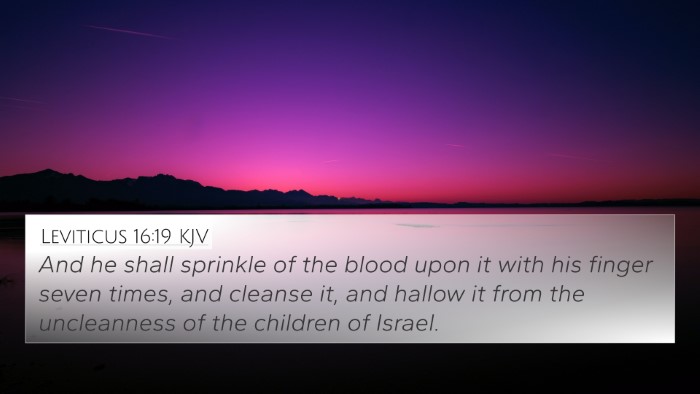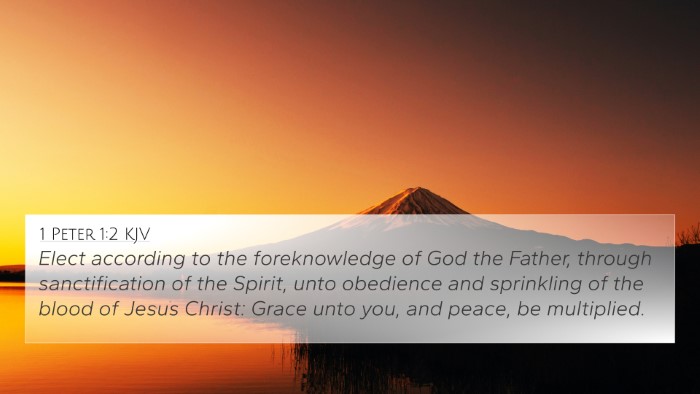Understanding Exodus 29:20
Bible Verse: Exodus 29:20 - "Then thou shalt kill the ram, and take of his blood, and put it upon the tip of the right ear of Aaron, and upon the tip of the right ear of his sons, and upon the thumb of their right hand, and upon the great toe of their right foot, and sprinkle the blood upon the altar round about."
Overview
The passage presents a critical moment in the ordination of Aaron and his sons as priests. The ritualistic use of blood signifies the sanctification and the serious nature of priestly duties.
Commentary Insights
-
Matthew Henry's Commentary:
Henry emphasizes the significance of the blood in the ritual of consecration. He describes how the blood served to signify life and divine acceptance. It was essential for the priests to be marked distinctly to show that they were set apart for the service of God.
-
Albert Barnes' Notes on the Bible:
Barnes provides insight into the symbolic nature of blood in the Old Testament context, focusing on its representation of atonement and purification. He notes how the actions taken with the blood are deliberate and serve as a foreshadowing of greater sacrifices to come.
-
Adam Clarke's Commentary:
Clarke elaborates on the symbolic gestures involved in the ordination rite. He highlights the importance of each part of the body being sprinkled with blood, signifying that the whole person, in every function, is dedicated to God’s service.
Thematic Connections
Exodus 29:20 connects to several broader themes within the scripture:
- Consecration: The act of dedicating individuals for holy purposes is a recurring theme throughout the Bible. This verse emphasizes preparing oneself for a sacred task.
- Atonement: The use of blood in ritualistic practices traces back to the atonement for sin, illustrating God's plan for salvation.
- Old Covenant Rituals: This ordination ceremony establishes the protocols for priestly service that would govern the Israelites.
Cross-References
This verse bears multiple connections with other Bible verses that illustrate similar themes or ideas:
- Leviticus 8:23-24: Details the anointing and consecration process for priests.
- Hebrews 9:22: States that without the shedding of blood there is no remission of sins.
- Romans 12:1: Encourages believers to present their bodies as living sacrifices, holy and pleasing to God, which corresponds to the idea of consecration.
- Exodus 24:8: Discusses the blood of the covenant, symbolizing God's relationship with Israel.
- 1 Peter 1:2: Mentions the sprinkling of blood of Jesus, linking New Testament believers to the sanctification process.
- Hebrews 10:19-22: Talks about entering the presence of God by the blood of Jesus, drawing parallels with the rituals of the Old Testament.
- Ephesians 1:7: Speaks about redemption through His blood, emphasizing the transformative power of Christ’s sacrifice.
Bible Verse Analysis
In analyzing Exodus 29:20 and its context, scholars note several important aspects:
- Priestly Identity: The rituals performed indicate how significant a role the priests play in leading the people of Israel in worship and sacrifices.
- God's Holiness: The detailed instructions emphasize God's holiness and the need for purity when approaching Him.
- Historical Context: Understanding the socio-religious context of ancient Israel helps in comprehending the weight of these rituals.
- Significance of Blood: Blood represents life and the seriousness of atonement for sins and entering into covenants with God.
Tools for Bible Cross-Referencing
For those interested in further exploring the connections in Scripture, consider using the following tools for Bible cross-referencing:
- Bible Concordance: A valuable tool that lists scripture references alongside key terms.
- Bible Cross-Reference Guide: Comprehensive resources that facilitate the study of interconnections between verses.
- Cross-Reference Bible Study: A method of studying scripture by exploring related verses and their meanings.
- Bible Chain References: A technique allowing readers to follow themes and messages throughout the Bible.
Conclusion
Exodus 29:20 serves as a significant verse within the Old Testament, illustrating the sanctification process of God’s chosen leaders. Understanding this verse requires examining its rich cultural, historical, and theological contexts. By utilizing cross-references and various tools for Bible study, believers can gain deeper insights into the connections that run throughout Scripture, finding meaning in how God’s covenant relationships unfold across both the Old and New Testaments.
Related Queries
For further study, you might explore:
- What verses are related to the consecration of priests?
- Find cross-references for rituals in Leviticus.
- How do Exodus 29:20 and Hebrews 9:22 connect?
- Similarities between Old Testament sacrifices and New Testament themes.
